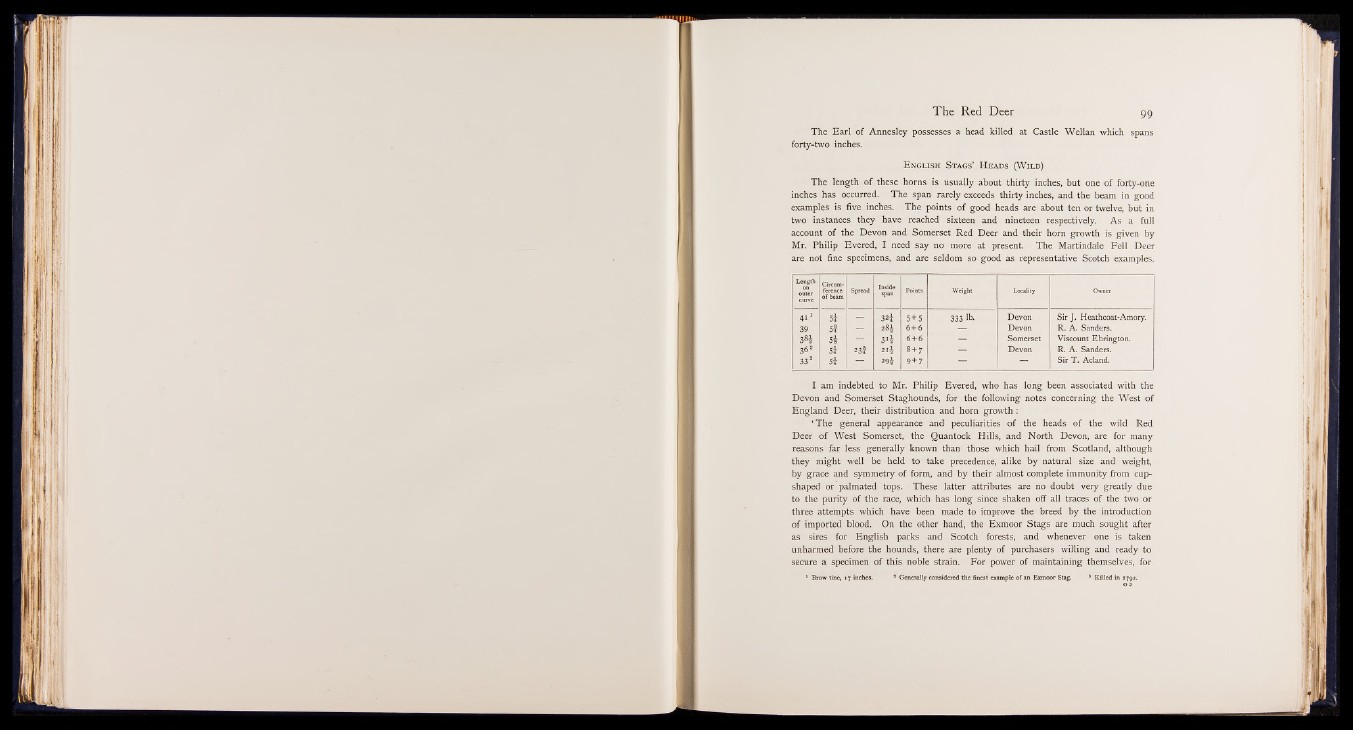
The Earl of Annesley possesses a head killed at Castle Wellan which spans
forty-two inches.
E n g l ish S t a g s ’ H e a d s (W il d )
The length of these horns is usually about thirty inches, but one of forty-one
inches has occurred. The span rarely exceeds thirty inches, and the beam in good
examples is five inches. The points of good heads are about ten or twelve, but in
two instances they have reached sixteen and nineteen respectively. As a full
account of the Devon and Somerset Red Deer and their horn growth is given by
Mr. Philip Evered, I need say no more at present. The Martindale Fell Deer
are not fine specimens, and are seldom so good as representative Scotch examples. I
L; r Circum- Spread Points Weight Locality Owner
4 1 1 5i — 32i 5 + 5 3 3 3 lb- Devon Sir J. Heathcoat-Amory.
39 5f ' — 6+6 — Devon R. A . Sanders.
5i BIS 3 ii 6+6 — Somerset Viscount Ebrington.
36* 5} 23t 2 i i 8+7 — Devon R. A . Sanders.
33 s 5i — 29i 9 + 7 — — Sir T . Acland.
I am indebted to Mr. Philip Evered, who has long been associated with the
Devon and Somerset Staghounds, for the following notes concerning the West of
England Deer, their distribution and horn growth :
‘ The general appearance and peculiarities of the heads of the wild Red
Deer of West Somerset, the Quantock Hills, and North Devon, are for many
reasons far less generally known than those which hail from Scotland, although
they might well be held to take precedence, alike by natural size and weight,
by grace and symmetry of form, and by their almost complete immunity from cupshaped
or palmated tops. These latter attributes are no doubt very greatly due
to the purity of the race, which has long since shaken off all traces of the two or
three attempts which have been made to improve the breed by the introduction
of imported blood. On the other hand, the Exmoor Stags are much sought after
as sires for English parks and Scotch forests, and whenever one is taken
unharmed before the hounds, there are plenty of purchasers willing and ready to
secure a specimen of this noble strain. For power of maintaining themselves, for
Brow tine, 17 inches. * Generally considered the finest example of an Exmoor Stag. * Killed in 1792.